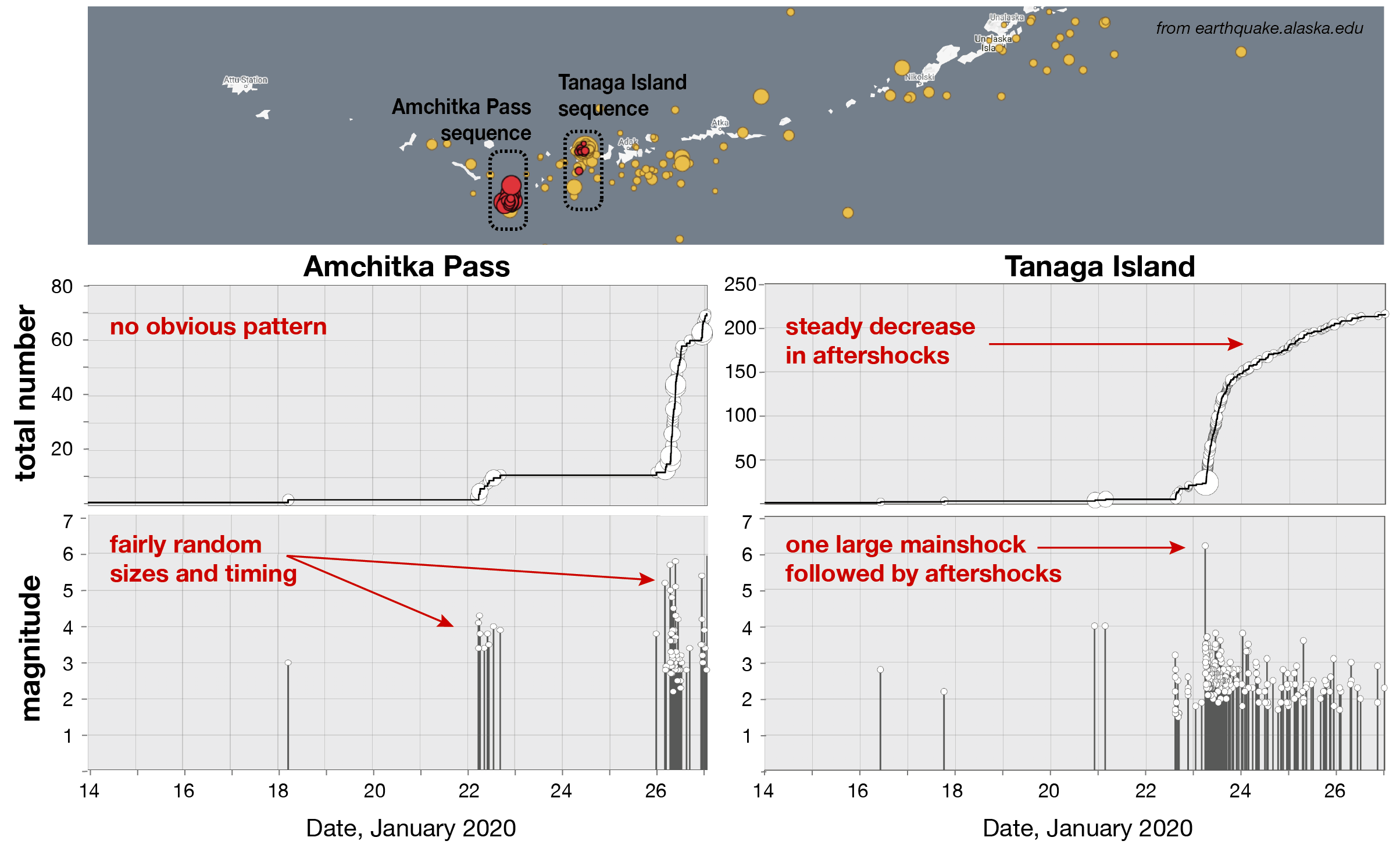We are getting questions about current earthquake activity in the western Aleutians—and with good reason. There are actually two different sequences of earthquakes unfolding right now in the Andreanof and Rat Islands. Both are pretty typical behavior, but they illustrate two different types of activity that we see frequently. Last Wednesday a M6.2 earthquake occurred near Tanaga Island. So far we have seen about 250 aftershocks. These will continue for weeks, but (barring another large earthquake) the number of quakes each day will continue to decrease. About 100 miles to the west, near Amchitka Pass, an unrelated swarm of earthquakes has been unfolding. This sequence is not as energetic but has spawned half a dozen M5+ earthquakes in the past day.
The figure that accompanies this post is a bit wonkish but illustrates these differences quite well. The map on top shows the location of the two different sets of earthquakes. The top graphs show the total number of earthquakes (all sizes) for the past two weeks in each region. The bottom plots show the magnitude of the individual earthquakes. In seismology parlance, we refer to the Amchitka Pass sequence as a swarm. The earthquakes appear rather random in occurrence and size. By contrast, the Tanaga Island sequence is a relatively typical mainshock-aftershock sequence. That is, a large earthquake occurred near the beginning and has been followed by smaller earthquakes occurring at a progressively slower rate. These plots also demonstrate that we can detect smaller earthquakes in the Tanaga region. This is largely because of the hard work of the Alaska Volcano Observatory to operate additional equipment in the region.
The astute reader will note the shortcomings in my explanations. See for example the handful of earthquakes that occurred before the Tanaga mainshock. Or note the three-day hiatus and reboot of the Amchitka sequence. Yes, these definitions are imperfect. But the ideas they represent (mainshocks, aftershocks, swarms) are important concepts that we use to make sense of earthquakes we observe day-to-day. And these concepts mostly work, or at least until a new unforeseen earthquake changes the pattern!







